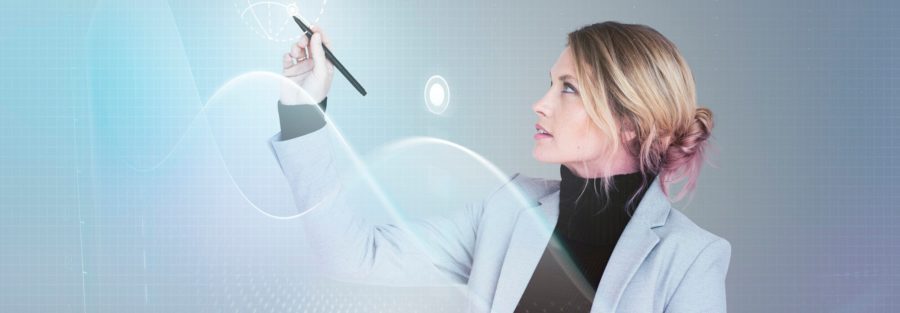The future of learning demands adaptability, innovation, and strategic thinking from today’s learning professionals. As organizations face rapid digital transformation and a shift toward a hybrid work culture, the Learning and Development (L&D) function must evolve to empower employees with essential skills and flexible learning opportunities. Through online learning management systems and data-driven strategies, L&D professionals can ensure their organizations stay resilient and future-ready.
What Makes an Organization Future-Ready?
A future-ready organization embraces digital learning solutions, adapts quickly to change within organizations, and builds a workforce capable of thriving in uncertain conditions. This includes encouraging lifelong learning, assisting with skill development, and coordinating learning programs with organizational objectives. Learning systems that enable mobile learning, self-paced learning, and real-time tracking are central to this transformation.
How Can Learning Professionals Drive Change Within Organizations?
Learning professionals act as catalysts for growth by:
- Identifying skill gaps through analytics
- Developing personalized learning paths for targeted upskilling
- Supporting corporate training and compliance that meets industry guidelines
- Promoting an ongoing learning culture throughout all organizational tiers
By doing so, they not only improve performance but also contribute to long-term sustainability and innovation.
What Strategies Help Build a Future-Ready Workforce?
1. Adopt Digital Learning Solutions
- Use AI, AR, and VR for immersive, engaging training.
- Leverage online learning management systems that support mobile learning and content personalization.
- Utilize analytics to predict training requirements and increase return on investment.
2. Deliver Personalized Learning Paths
- Implement AI-driven content recommendations based on employee goals.
- Offer self-paced learning and hybrid training formats.
- Create continuous feedback loops to enhance learning quality and engagement.
3. Focus on Future-Critical Skill Acquisition
- Educate leaders on soft skills like how to be flexible and emotionally intelligent.
- Provide access to technical training in data literacy and digital tools.
- Introduce courses on sustainable practices to align with global trends.
What Role Does Culture Play in Lifelong Learning?
An organization that is prepared for the future is built on a culture of ongoing learning. Support:
- Upskilling and reskilling initiatives aligned with evolving business needs.
- Peer-to-peer learning through mentoring and collaborative platforms.
- gamification elements, including leaderboards and badges, to boost motivation.
How Do We Ensure Equity and Inclusion in Corporate Training?
Implement DEI-focused (diversity, equity, and inclusion) strategies and practices by:
- Designing inclusive, globally relevant content.
- Creating learning opportunities for different demographics.
- Using unbiased AI tools to promote fair access and personalized learning paths.
This ensures that learning programs serve a wide range of needs and promote equitable skill acquisition.
How Can L&D Measure the Impact of Learning?
- Use real-time KPIs to monitor learning engagement and training effectiveness.
- Align learning systems with broader goals like customer satisfaction and innovation.
- Be agile, redesign content continuously based on learner feedback and organizational changes.
How Should L&D Teams Collaborate with Business Units?
Strategic partnerships with internal stakeholders are essential. Co-creating training with business units:
- Ensures programs address real challenges.
- Keeps L&D aligned with shifting goals.
- Positions learning professionals as value creators, not just content providers.
Why Should You Consider Platforms like MapleLMS?
Modern solutions from companies like MapleLMS offer robust digital learning solutions tailored to enterprise needs. Their tools ensure system security, mobile-friendly access, and scalability, all essential for building a skilled, agile workforce.
FAQs
Q1: How does L&D contribute to an organization’s future-proofing?
L&D professionals identify skill gaps, align training with business goals, and promote continuous learning to build a resilient workforce.
Q2: Why are personalized learning paths important?
They cater to individual goals and learning styles, increasing engagement and improving skill acquisition outcomes.
Q3: How does an online learning management system support a hybrid work culture?
It offers mobile learning, on-demand content, and real-time collaboration tools suitable for remote and hybrid teams.
Q4: What skills are essential for the future workforce?
Digital literacy, emotional intelligence, flexibility, and strategic thinking are important skills.
Q5: How can learning impact business performance?
Well-aligned training improves employee productivity, customer experience, and innovation, directly contributing to business growth.
Conclusion
Learning professionals’ empowerment is now a strategic priority rather than an optional one. With the right blend of digital learning solutions, personalized learning paths, and a culture of continuous learning, L&D teams can successfully lead their organizations into the future. The key is to remain adaptable, data-driven, and deeply aligned with both employee needs and business goals. Talk to our industry experts to discover how MapleLMS could be of use in empowering professionals for future-ready organizations!

